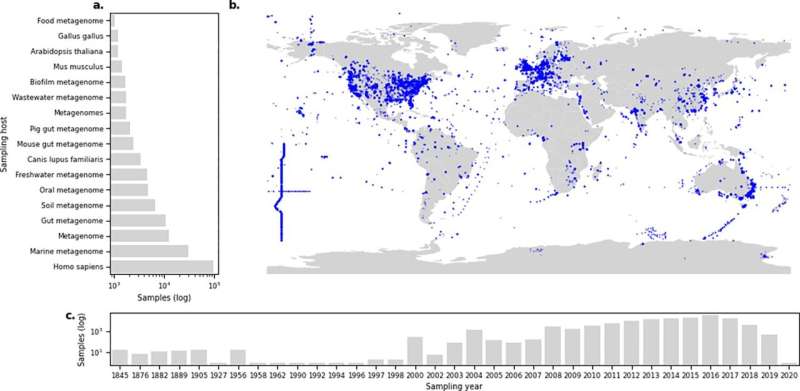Researchers build a 'Wikipedia' for resistant bacteria

In the future, even a small infection can become life-threatening for people if disease-causing bacteria become resistant to traditional treatment with antibiotics.
Based on 214,000 microbiome samples, DTU researchers have created a freely accessible platform that shows where in the world different types of resistant bacteria are found and in what quantities.
To gain an understanding of how antibiotic resistance is spreading across the world, it is important to know where, which and how many resistance genes are found in all the environments that surround us. The genes that provide resistance can spread between animals, humans, and the environment.
Data can be used for tailoring guidelines
Today, there is a large amount of data available in various online repositories and a number of limited data sets on the occurrence of resistant bacteria in, for example, sewage, soil, animals or humans. But the data is not actively being used, because it until now has been difficult to get access to, handle, and, especially, utilize these large datasets due to the computing power needed.
"Such large quantities of data are interesting because we can find new patterns and connections between disease-causing microorganisms and antibiotic resistance. For example, we can see that certain types of antibiotic resistance have very different prevalence in different parts of the world. This knowledge we can use to tailor guidelines on how to combat resistance in different places in the world," says Ph.D.-student Hannah-Marie Martiny from the DTU National Food Institute, who is one of the driving forces behind the new database.
Connections between bacteria and resistance
Researchers from the DTU National Food Institute have analyzed 214,000 samples from, among other things, animals, humans, and soil, and organized them in a way that makes it possible for others to use them. The goal is to create a catalog of resistant bacteria that spans countries, people, and environments.
"You can compare it to a large encyclopedia, like Wikipedia, which collects knowledge from many different sources and organizes it in a way so that everyone can access it. In the same way, we collect data on antibiotic resistance in bacteria and share it with everyone," she says.
The 214,000 samples together take up almost 300 terabytes and it takes months to analyze it on a high-performance-computer
"By carrying out the initial very resource-intensive analyzes and making them available to everyone, we give researchers all over the world better opportunities to come up with new solutions that can help reduce the incidence of antibiotic resistance. This is in line with the principles about making data useful in Open Science and FAIR," says professor at the DTU National Food Institute Frank Møller Aarestrup, who is one of the pioneers in resistance monitoring.
Global monitoring in real time
The development of resistant bacterial types varies greatly from country to country. But a resistant bacterium in, for example, Egypt can quickly spread throughout the world and cause infections in Danish patients with bacteria that are resistant to traditional treatment.
"The experiences from the COVID-19 pandemic have shown us the value of global surveillance data, e.g., to tackle diseases when they threaten to spread beyond a country's borders," says Frank Møller Aarestrup.
The work to develop the database is described in PLOS Biology.
More information: Hannah-Marie Martiny et al, A curated data resource of 214K metagenomes for characterization of the global antimicrobial resistome, PLOS Biology (2022). DOI: 10.1371/journal.pbio.3001792
Journal information: PLoS Biology
Provided by Technical University of Denmark




















